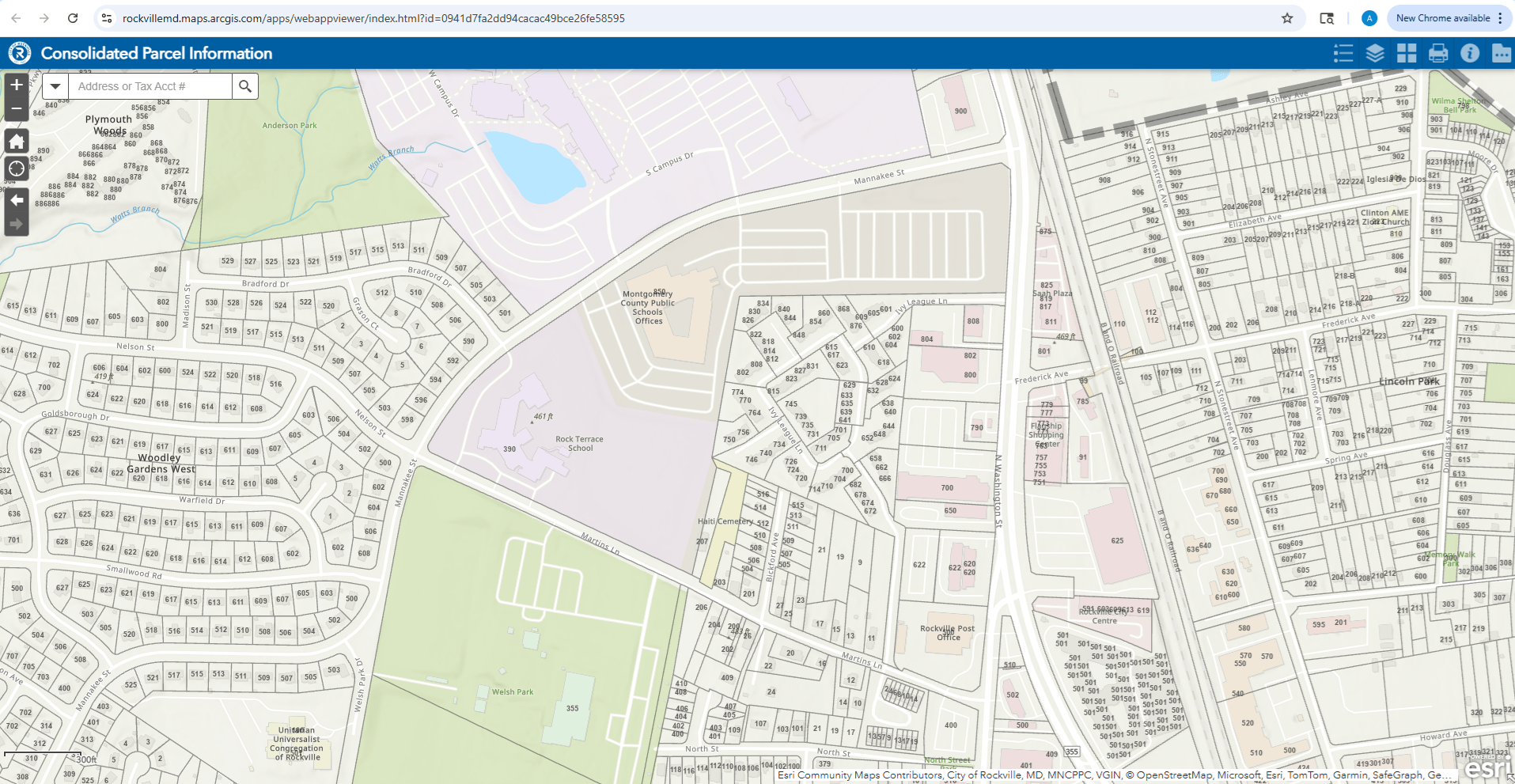By Adam Pagnucco.
Last week, I wrote about MCPS’s proposed $400+ million central office campus. The project, which uses land now occupied by the old Carver central office and the former Rock Terrace school, appears in Superintendent Thomas Taylor’s recommended FY27-32 capital budget. Here is how the project expenditures are distributed by year.
Through FY25: $5 million
FY29: $14.2 million
FY30: $74.1 million
FY31: $72.7 million
FY32: $62.4 million
Beyond six years: $200 million
Total cost: $428.3 million
Because nearly half of the project’s cost is deferred to out years, that leaves it vulnerable to the effects of inflation. That means cost increases are inevitable. This project, if it’s ever built, will cost significantly more than a half billion dollars. And it’s for a government office campus on tax exempt land.
It won’t happen. We can’t afford it. Any sane elected official will know that.
There’s a better way.
Let’s start with the land. According to the City of Rockville, the site has 30.65 acres with an assessed land value of $9.7 million. That assessment is waaaaay low considering that the site is now zoned just for single family houses. How valuable is it really?
That depends on how it is used.

The MCPS Carver/Rock Terrace site.
A lot could be done with a 30 acre site that fronts MD-355. Imagine an MCPS office complex combined with housing, retail and perhaps private office space. It’s between two Metro stations (Rockville and Shady Grove). Its neighbors include a Montgomery College campus to the north and commercial businesses to the east, so commercial development is not out of character for the area. And any of these uses are far superior to its current use, which consists of two under-occupied crumbling buildings and a vast stormwater-churning parking lot.
MCPS should think big. (I am talking to you, TT!) The district should put out a competitive request for proposal to developers to partner on redeveloping this site for housing, retail and a new MCPS headquarters. Thirty acres is more than big enough to hold all of these uses. MCPS has enormous leverage through its ownership of the land, which it could contribute for free. In return, it could negotiate new office space for FAAAAAR less than a half billion dollars. The developer would get a fabulous opportunity for a unique site in the D.C. region.
What about transportation? The Carver site is 1.2 miles away from the Rockville Metro station. That’s a short bus ride or a long-ish walk. The site is adjacent to MD-355, one of the county’s major arteries and a corridor for WMATA and Ride On buses. The county would someday like to build a bus rapid transit line on MD-355 and property tax revenue from any development on the site could contribute to its construction. This is workable from a land use perspective.
There would be a huge role for city government. To make the project workable, the city would have to rezone it. The city could use that as leverage to negotiate an agreement like the one the City of Gaithersburg negotiated for the Crown High School site which would deliver needed amenities. Again, this is more than workable.
What could we get out of this?
1. More housing, which we desperately need.
2. The replacement of two rotting buildings and a vast sea of asphalt with environmentally responsible development.
3. Potential retail at the site.
4. Hundreds of construction jobs.
5. Impact taxes and recordation taxes which are badly needed for school construction.
6. Office space for MCPS at waaaay less than a half billion dollars paid by taxpayers.
7. Any other amenities that the city could negotiate in exchange for zoning.
8. The conversion of a 30 acre site from paying zero property taxes to one that pays millions to both the county and the city every year.
And what makes this feasible? The City of Rockville has wisely decided not to adopt the county’s enormously destructive rent control law, which has shut down multifamily development due to deterring project financing. Unlike a project of this kind elsewhere in MoCo, this project could actually be financed and built.
It would take incredible vision from Taylor and city government officials. But if they could get this done, it would be an enormous, generational triumph not only for them but also for the public.
